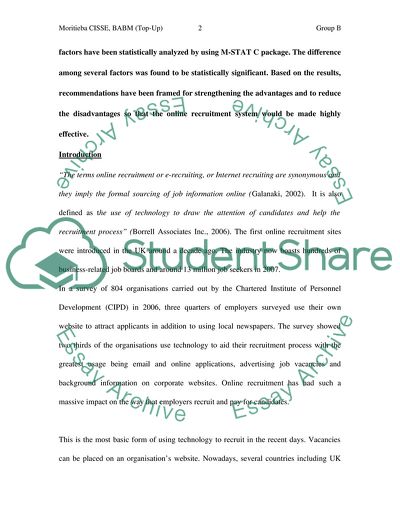Cite this document
(The Success of Online Recruitment Research Paper - 1, n.d.)
The Success of Online Recruitment Research Paper - 1. https://studentshare.org/human-resources/1712951-the-analysis-of-the-success-of-online-recruitment-in-selecting-and-qualifying-candidates-for-career-vacancies
The Success of Online Recruitment Research Paper - 1. https://studentshare.org/human-resources/1712951-the-analysis-of-the-success-of-online-recruitment-in-selecting-and-qualifying-candidates-for-career-vacancies
(The Success of Online Recruitment Research Paper - 1)
The Success of Online Recruitment Research Paper - 1. https://studentshare.org/human-resources/1712951-the-analysis-of-the-success-of-online-recruitment-in-selecting-and-qualifying-candidates-for-career-vacancies.
The Success of Online Recruitment Research Paper - 1. https://studentshare.org/human-resources/1712951-the-analysis-of-the-success-of-online-recruitment-in-selecting-and-qualifying-candidates-for-career-vacancies.
“The Success of Online Recruitment Research Paper - 1”. https://studentshare.org/human-resources/1712951-the-analysis-of-the-success-of-online-recruitment-in-selecting-and-qualifying-candidates-for-career-vacancies.


